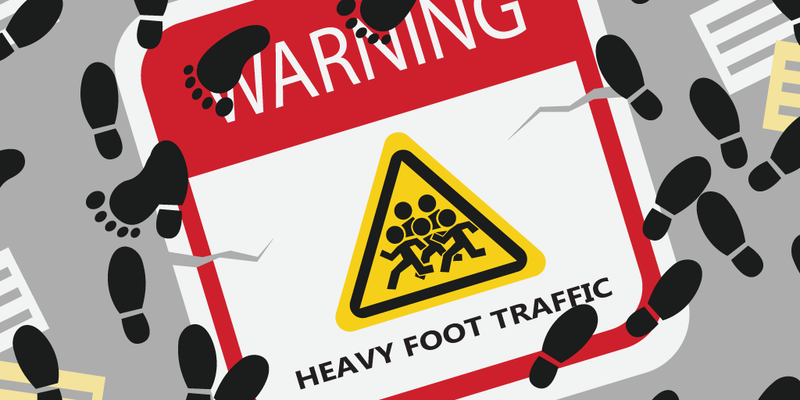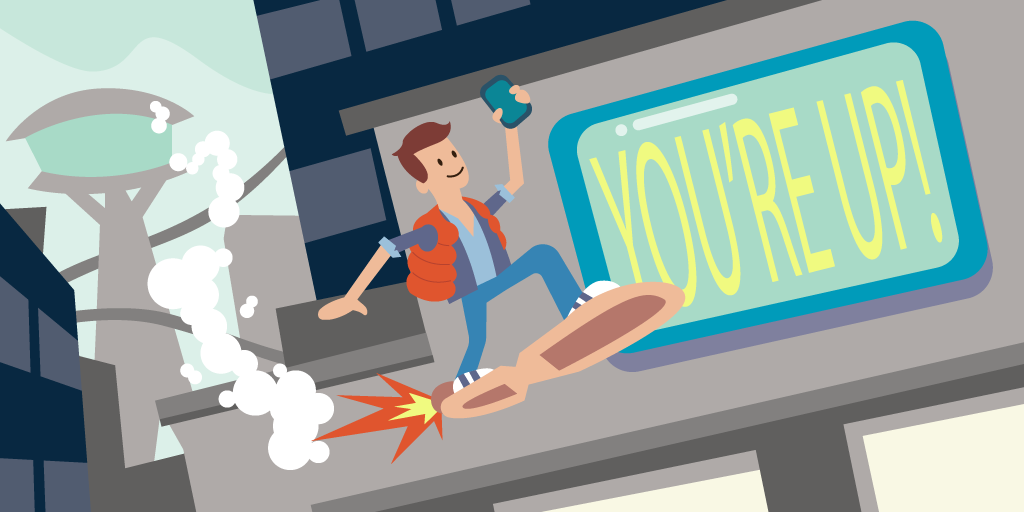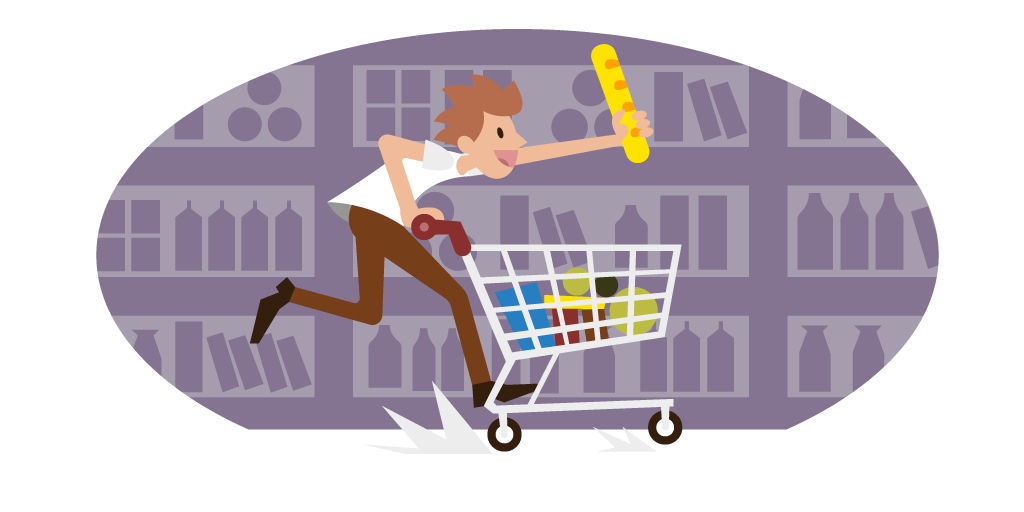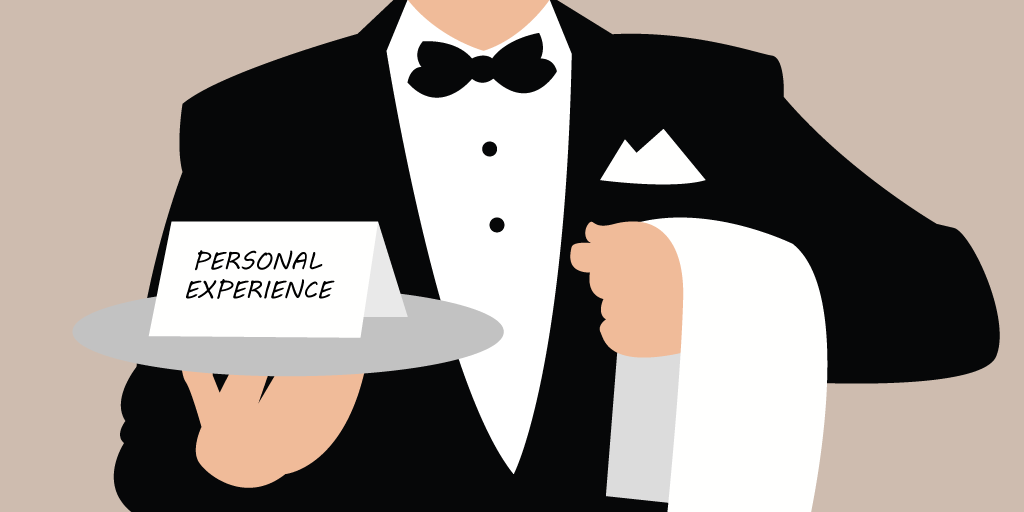The day is going by and with each passing hour more customers are lining the hallways of your store. Soon, you’ll find yourself besieged by hordes of visitors with no chance of survival.
You’re obviously not ready. What to do, then?
Well, the goal is to never find yourself caught off guard and to prepare for heavy footfall traffic. You want your store to provide the best possible experience when there’s only a handful of customers (low footfall) and when there’s too many to count.
Want to solve the heavy footfall problem right now? Get a free 14-day trial of Qminder and save yourself the queue management headache.
Mark Your Entrances and Exits

When managing heavy footfall, you want customer journey to be as intuitive as possible. And what could be more intuitive you might ask than marking your entrances and exits.
Remember, first impressions matter when it comes to customer retenton. That initial experience — when the fluorescent lighting shines on a new entry’s head — sets the tone for the customer’s entire journey through your store.
Underlying that simplicity is a general rule: businesses have to minimize their customer’s confusion. Especially when there’s heavy traffic, though it’s just as important with low footfall.
Heavy traffic combined with mass confusion — as to where entrances and exits are — can lead to a real customer journey disaster.
You always want customers to feel safe and secure while wandering the hallways of your store. They should never feel anxious trying to navigate the aisles or have to scratch their heads while trying to figure out how to exit.
Why Exits Are Important to Customer Flow
While entrances almost don’t need to be mentioned, we do need to take a moment to talk about exits. Now I know what you’re thinking: “What’s there to talk about?”
Well, that’s part of the issue.
Business owners, managers, and customers all take exits for granted. Just follow the sign marked “E-X-I-T.” They’re obvious. Right?
Here’s the thing.
With any experience people are more prone to remember the peak moment and the end — that's called the peak-end rule. Everything in the middle fades into a blur.
If exiting IKEA is like running with the bulls or feels jampacked like sitting in the middle-seat on a commercial flight, customers are going to leave your business with a sour impression.
Especially if carts are crashing into another as customers try to exit.
The point being, care about your exit. Make sure it’s clearly marked, smooth and as pleasant as the rest of the journey.
Maybe station an employee there to ensure customers make it to their cars or find everything they needed that day. They can also help direct customers when traffic is heavy.
Remember, businesses want to ensure the entire customer journey is smooth. That means ironing out any bubbles along the way, including after customers have made a purchase.
Doing so one of the main methods of how to increase footfall in retail stores.
Understand Your Customer’s Journey

Here’s where store layout comes into play when dealing with heavy traffic. How’s that you may ask?
Great businesses understand what their customer’s experience is like in their store. To do the same, ask yourself: “What kind of experience do I want?” What can businesses do to keep you engaged even when it's crowded?
Ultimately, businesses need to create an intuitive and convenient store layout. We’re talking wide aisles and obvious pathways. If you stand in the middle of a lane, spread both arms out and hit merchandise, your lanes are obviously too narrow.
Design your store to meet the maximum capacity, your busiest hours. You may not have proven data telling you what those numbers look like (yet), so instead, posit the future.
We’re not necessarily talking about managing Black Friday-level of customer crowds. But the idea is, you should prepare for the heaviest traffic possible so it won't take you by surprise.
Clearly Labeled Signage Helps Handle Heavy Footfall
It’s unacceptable to have heavy traffic because customers can’t find what they’re looking for. Most people enter your store with an established mission — to buy a jewel, a smartphone, high-end PC parts, etc. These kinds of customers are not there to window shop.
So, convenience your customers by setting up signage that will get them to where they need to be as soon as they walk into the entrance. Again, stationing an employee to answer customer’s questions will help minimize the time customers spend searching for their desire.
Why bother?
Doing so reduces congestion and keeps traffic moving. Remember, within every hour there are customers coming and going. At the heaviest times, the flow may be constant.
Clear signage ensures that the momentum of customers is never halted.
Use a Queue Management System to Handle Customer Flow

You know what makes managing heavy traffic even easier? A queue management system — software specifically designed to manage waiting in line.
The longer we wait, the more crowded a store, the more stressed out and impatient customers become.
Studies have shown that customer’s patience is short-lived: 80-90% of customers say they’ll switch retailers rather than wait around.
That’s a loss of profit — a slap to the bottom-line. The idea is to minimize the number of customers leaving the store even on its busiest days.
Doing so requires information. The data needed to maximize efficiency.
Thanks to a queue management system, your business will be equipped with the information it needs to give the best customer experience.
Collecting Retail Footfall Analytics
Understanding the customer’s journey means having the right information.
Retail footfall analytics data does exactly what it says — tracks feet as they move through the store.
This means you’ll know how long each customer takes on their journey, if they were held up at any point, and whether they leave the store before making a purchase.
Footfall data offers powerful insights.
If retail footfall analytics shows that your business’ traffic levels are heavier than expected, readjust your store’s layout to ensure the positive in-store customer experience.
Maybe the data shows that overall traffic has steadily increased over the past three months, and congestion has increased along with it. That might mean it’s time to redesign the stores’ layout altogether.
Data over time tells managers as to when their store experiences its busiest days. Maybe it’s every third Thursday of the month. This data should clue managers in that they need more staff on the floor on the third Thursday.
Take full advantage of Service Intelligence and learn valuable lessons from heavy footfall in your location.
Train Your Staff to Work With Heavy Footfall

One, albeit important, part of handling heavy traffic is providing excellent service. You need to understand how to meet customer’s needs even when the aisles are swamped.
The lesson here is simple, if not self-evident: Train your staff.
Give your employees the tools and resources they need to best serve large crowds. That means training and information — real-time information. The kind of information a queue management system gives you.
Information empowers staff. They know which customers are in need of assistance, how many people are in their store, and what task they should move on to next.
And when staff members are empowered, they can best adapt to the situation, including many people wandering the aisles.
Undervaluing your employees is a sure way to sabotage your customer service strategy, so be sure their work feels needed and impactful.
Managing heavy traffic is part organization, part understanding your customers. When both parts are integrated, businesses can provide a great customer experience even when it seems like Black Friday in the middle of July.
It’s even easier to accomplish this with a queue management system like Qminder.
Speaking of, you can sign up for a 14-day free trial of Qminder — no credit card required. With the right tools, you’ll handle heavy traffic with ease and wonder what all the fuss was about.






